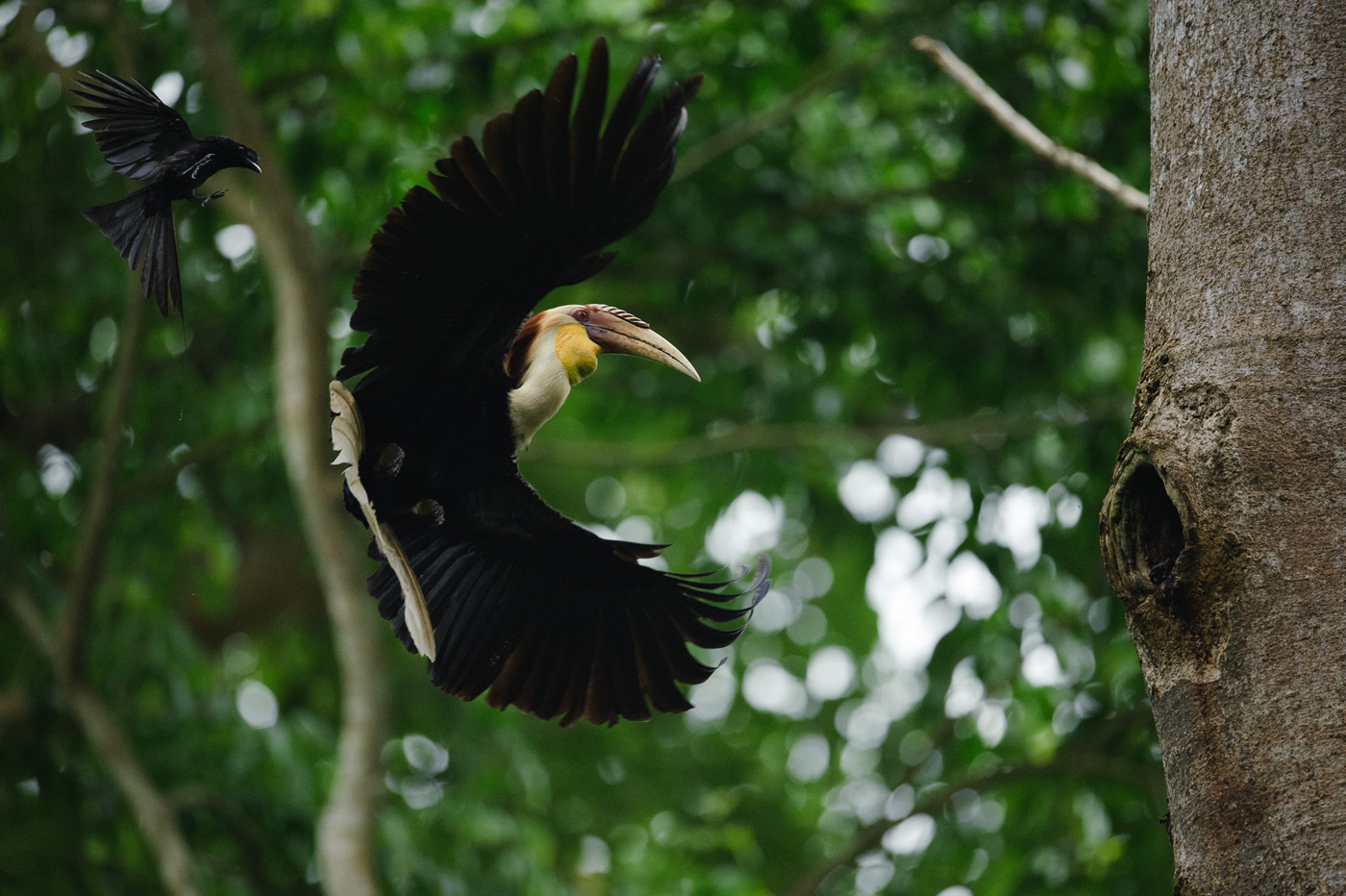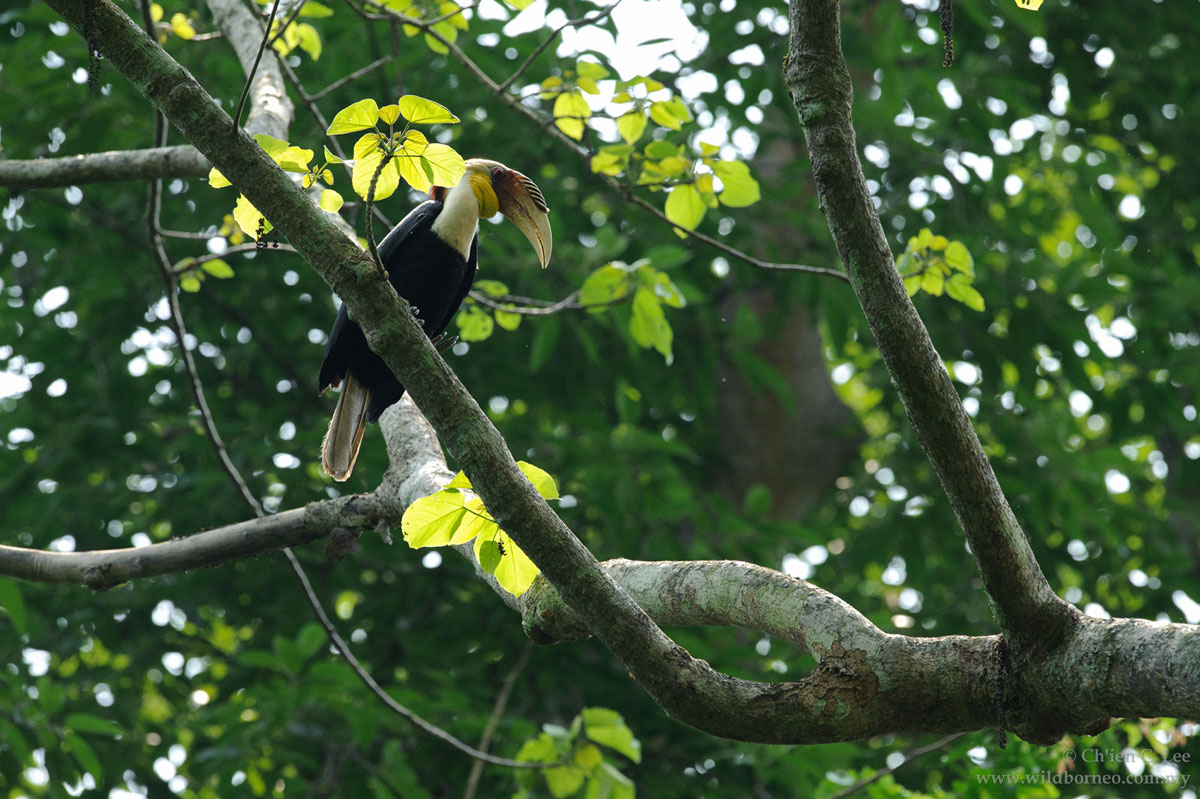Plain-pouched Hornbill (Rhyticeros subruficollis )
Previously considered in genus Aceros. Previously considered conspecific with Papuan Hornbill or with Wreathed Hornbill, but differs from both in size, bill shape and bare-part colors.
Previously considered in genus Aceros. Previously considered conspecific with Papuan Hornbill or with Wreathed Hornbill, but differs from both in size, bill shape and bare-part colors.

Size 75-60 cm. Male 1815-2270 g. Very similar in appearance to the sympatric Wreathed Hornbill, but smaller.The male has a dark reddish base to bill,on ridges on mandibles,and there is no black bar across the yellow pouch.
Female is like female Wreathed Hornbill except for plain bill (no ridges) and lack of black bar across blue pouch. Juveniles of both sexes like adult male in plumage, and without bar across paler yellow pouch, but bill small and pale horn-colored.
The call is a harsh bark; in fight a 3-note “ehk-ehk-ehk”.
Occurs in rainforest and mixed deciduous hill forest, especially along river valleys; mainly in the lowlands, recorded from coastal flats to 1,000 m elevation.
It prefers pristine primary forest and seems to avoid disturbed and logged areas. Feeds mainly in the canopy of large forest trees, it has also been known to descend to the ground.
Feeds mainly on fruits including Ficus racemosa (Moraceae), Polyalthia spp (Annonaceae), Strombosia sp (Olacaceae) and Knema spp (Myristicaceae) recorded in a mixed deciduous forest, western Thailand. It also takes some small animal food; in northern Malaysia it has been reported to hawk for newly emerged mayflies (Ephemeroptera).
Its movements are not well understood, but large flocks travelling between roosting and feeding areas after the breeding season have been recorded from northern Malaysia.


Studies in Huai Kha Khaeng WS, Thailand, found that more than 90% of the nests are in cavities excavated by woodpeckers,particularly by Great Slaty Woodpecker (Muelleripicus pulverulentus).
Nesting season starts in the beginning of the year, Jan-Feb and lasts until May or Jul. This species only selects secured sites in immensely high trees for nesting, and the majority of nest cavities are in Tetrameles nudiflora trees (Datiscaceae) (76.5%) of a mixed deciduous forest; 17 nests in Huai Kha Kheang,Thailand, were 11-33 m (average 18 m) above the ground in 33-55 m tall trees.
The female stays inside the nest throughout the nesting cycle. she uses dried mud and droppings for cement.The clutch is 1-2 eggs, less often 3.The male feeds the female at the nest. A young was observed being fed in a nest hole in early May. Total nesting cycle in Thailand is 115 days in average (range 98-146 days). Otherwise information on incubation and nesting periods is unknown.